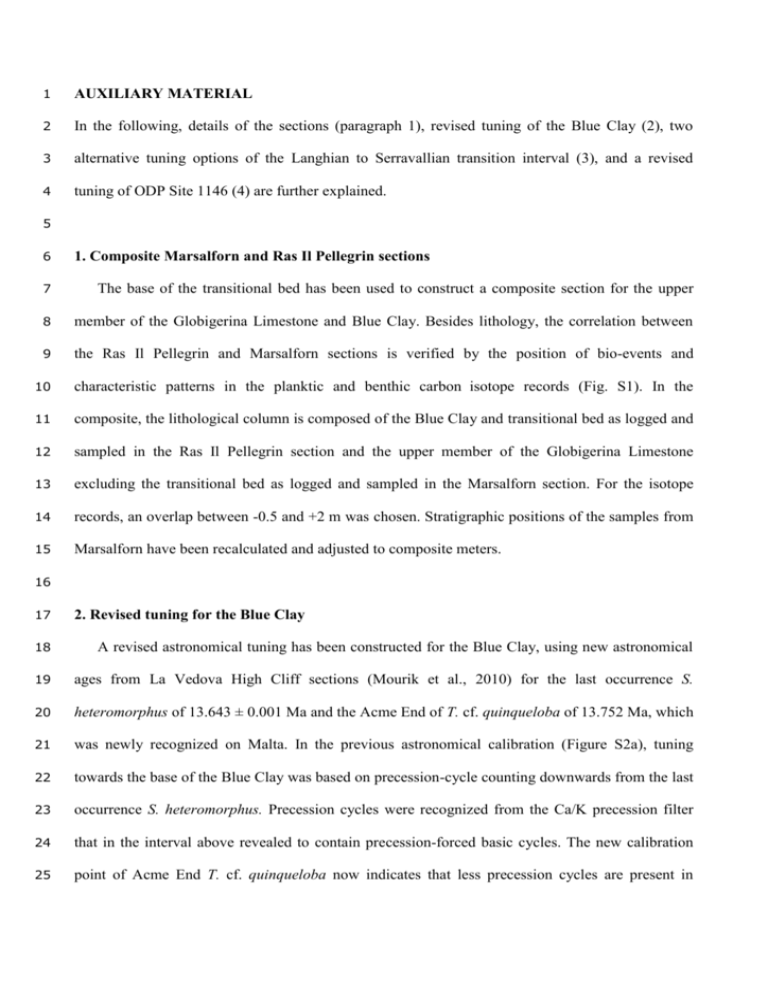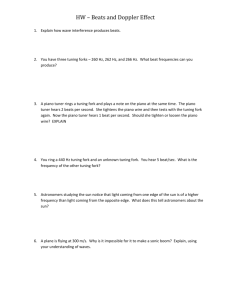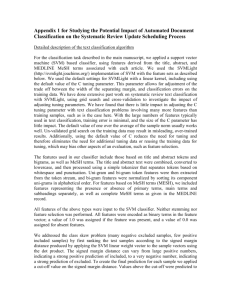palo1674-sup-0002-txts01
advertisement

1 AUXILIARY MATERIAL 2 In the following, details of the sections (paragraph 1), revised tuning of the Blue Clay (2), two 3 alternative tuning options of the Langhian to Serravallian transition interval (3), and a revised 4 tuning of ODP Site 1146 (4) are further explained. 5 6 1. Composite Marsalforn and Ras Il Pellegrin sections 7 The base of the transitional bed has been used to construct a composite section for the upper 8 member of the Globigerina Limestone and Blue Clay. Besides lithology, the correlation between 9 the Ras Il Pellegrin and Marsalforn sections is verified by the position of bio-events and 10 characteristic patterns in the planktic and benthic carbon isotope records (Fig. S1). In the 11 composite, the lithological column is composed of the Blue Clay and transitional bed as logged and 12 sampled in the Ras Il Pellegrin section and the upper member of the Globigerina Limestone 13 excluding the transitional bed as logged and sampled in the Marsalforn section. For the isotope 14 records, an overlap between -0.5 and +2 m was chosen. Stratigraphic positions of the samples from 15 Marsalforn have been recalculated and adjusted to composite meters. 16 17 2. Revised tuning for the Blue Clay 18 A revised astronomical tuning has been constructed for the Blue Clay, using new astronomical 19 ages from La Vedova High Cliff sections (Mourik et al., 2010) for the last occurrence S. 20 heteromorphus of 13.643 ± 0.001 Ma and the Acme End of T. cf. quinqueloba of 13.752 Ma, which 21 was newly recognized on Malta. In the previous astronomical calibration (Figure S2a), tuning 22 towards the base of the Blue Clay was based on precession-cycle counting downwards from the last 23 occurrence S. heteromorphus. Precession cycles were recognized from the Ca/K precession filter 24 that in the interval above revealed to contain precession-forced basic cycles. The new calibration 25 point of Acme End T. cf. quinqueloba now indicates that less precession cycles are present in 26 between these bioevents and so that sedimentation rates were higher in the lowest portions of the 27 Blue Clay. Therefore, we reinterpret the amount of precession cycles in the particular interval by 28 excluding cycles 2 and 5, that were defined as vague cycles previously counted in the tuning 29 (Figure S2b). The new astronomical tuning is based on correlating cycle number 1 of Abels et al. 30 [2005] to the insolation maximum at 13.753 Ma (Fig. S2b). Then, the tuning is made by correlation 31 of the cycles 3, 4, 6, 7, and 9 to 17 to subsequent precession cycles. Above from cycle 17, we 32 follow the tuning of Abels et al [2005]. In this revised tuning, the two bio-events are in line with 33 their respective ages at Vedova High Cliff section within uncertainty. Also, the extra cycle inferred 34 in the previous tuning between cycles 17 and 18 has disappeared. 35 Assuming that Ti/Al maxima, related to arid conditions in northern Africa, are in phase between 36 the southern (Malta) and northern (La Vedova) Mediterranean sites, the Ti/Al records are used to 37 independently check the Blue Clay tuning with respect to the tuning of the La Vedova High Cliff 38 section. The revised tuning in Figure Sb already shows a much better fit of the Ti/Al patterns 39 between Malta and Italy, although the phase relation to insolation is opposite (Fig. S2e). Changing 40 the phase relation by half a precession cycle results in the tuning shown in Figure S2d. This tuning 41 shows Ti/Al patterns in much better agreement (Fig. S2f). Moreover, the astronomical ages of the 42 bioevents are even more in line with the astronomical ages derived from the tuning of the La 43 Vedova High Cliff section, such as the influx of P. siakensis at ~13m and the “last occurrence” of 44 G. peripheroronda at 12.8 m. The Acme End of T. cf. quinqueloba is now dated at 13.748 Ma 45 within uncertainty of the age obtained from La Vedova High Cliff. Therefore, we regard the latter 46 as the best possible astronomical tuning for the Blue Clay. Following this tuning, the top of the 47 tansitional bd is dated 13.758 Ma with an uncertainty of less than a precessional cycle (0.02 Ma) 48 that comprises a still optional opposite phase relation and uncertainties in cycle recognition in the 49 lowermost Blue Clay. 50 51 3. Two alternative tuning options 52 The transition from the Globigerina Limestone to the Blue Clay is characterized by a major 53 increase in sedimentation rate. However, astronomical time control in this interval can not be 54 gained due to lithofacies change and the age model has to rely on importing astronomical ages for 55 bioevents. Between the Last common occurrence of H. walbersdorfensis (~1m below the base of 56 the transitional bed) and the top of the transitional bed (13.758 Ma) average sedimentation rate is 57 1.0 cm/kyr, which is considerably lower than the calculated sedimentation rate of ~5.9 cm/kyr for 58 the basal part of the Blue Clay (Fig. S3a). In the tuning based on the initial age model, the minima 59 A and B (Fig. 6b) are linked to the Eccentricity-Tilt (ET) minima at ~13.95 and ~13.85 Ma, which 60 follows directly from the assumption of a low but constant sedimentation rate between the base of 61 the transitional bed and the top of the transitional bed. However, the decreasing carbonate content 62 in the transitional bed (Fig. 6a) suggests that sedimentation rates rather increased and not decreased 63 with respect to the Globigerina Limestone. In addition, sea level lowering during the rapid East 64 Antarctic Ice Sheet expansion could have caused a hiatus at the top of the transitional bed. 65 A first alternative tuning (A) would be to correlate minimum A at the base of the transitional 66 bed to minimum B in the ET target curve (see Fig. 6b), thereby generating a very condensed 67 interval, or hiatus, at the base of the transitional bed (Figure S3b). Sedimentation rates will drop to 68 0.4 cm/kyr between -0.6 and 0 m, then increasing to 1.9 cm/kyr in the transitional bed. The age of 69 the top of the transitional bed will remain 13.758 Ma. 70 In the second alternative (B), minimum C at the top of the transitional bed is linked to minimum 71 B in the ET target curve. The first calibration point in the Blue Clay cycle 1 at ~2.0 m stays linked 72 to the insolation maximum at 13.753 Ma. Sedimentation rates across the transitional bed are 1.6 73 cm/kyr, which is more in line with sedimentation rates in the upper part of the upper member of the 74 Globigerina Limestone. In the condensed interval at the top of the transitional bed, sedimentation 75 rates are 0.2 cm/kyr. 76 Depending on which scenario will be chosen, the top of the transitional bed, reflecting the most 77 important step in environmental change in the central Mediterranean, will be at 13.758 Ma, 78 assuming that no hiatus is present at the base of the Blue Clay. The time involved in the transition 79 from the Globigerina Limestone to Blue Clay will be 180 kyr if sedimentation was continuous, or 80 91 kyr in case a hiatus or highly condensed interval is present at the base of the transitional bed. 81 Tuning the top of the transitional bed to 13.846 Ma, as in the second alternative, the duration of the 82 transitional bed would be 112 kyr. 83 84 4. Revised tuning of ODP Site 1146. 85 Comparison of the astronomically-tuned 13C of Malta with the ODP Site 1146 record revealed 86 discrepancies that asked for an evaluation of the tuned age model of ODP Site 1146 [Holbourn et 87 al., 2005; 2007]. Holbourn et al. [2005; 2007] did not follow the shipboard splice and mainly used 88 hole A while adding two short intervals from hole C to construct a revised splice. These intervals in 89 hole C were selected on the basis of additional isotope data from inferred short overlaps [Holbourn 90 et al. 2007]. The shipboard splice of Site 1146 [Shipboard Scientific Party, 2000] is not very 91 convincing in the Middle Miocene as core breaks of the two remaining holes A and C start to 92 coincide and characteristic patterns in magnetic susceptibility, color and natural gamma ray are 93 difficult to recognize in potential overlaps. It seems not possible to enhance the shipboard splice 94 based on these data. 95 The 400- and 100-kyr eccentricity related cycle patterns can rather easily be identified in the 96 isotope depth records of Holbourn et al. [2005; 2007]. Such patterns are clearly visible in both 97 records between 570 and 510 m, and between 490 and 460 m, while they can only be recognized in 98 the δ13C record between 510 and 490 m (Fig. S4). However, this pattern is markedly interrupted by 99 a strong peak at 530 m in both δ13C and δ18O, which originates from a short interval of hole C that 100 is incorporated in the revised splice of Holbourn et al. [2007]. In our revised composite depth scale, 101 we removed this interval from the splice, because it disturbs the 400-kyr scale related cycle pattern 102 and because a similar peak is not found in other isotope records from the open ocean, such as Ceara 103 Rise (Fig. 7). For our tuning, we assumed that the pronounced peak at 538 m indeed corresponds to 104 the most prominent 100-kyr eccentricity maximum at 15.6 Ma. Subsequently, we tuned 100-kyr 105 eccentricity related peaks between 530 and 510 one 100-kyr eccentricity maximum older than in 106 the tuning of Holbourn et al. [2007] (Fig. S4). In fact, this adjustment results in a better fit with the 107 expression of the 400-kyr eccentricity cycle in the isotope records, especially δ13C. The 108 identification of eccentricity related patterns in δ13C can be continued in the younger interval 109 between 510 and 490 m resulting in the revised tuning proposed in Figure S4. 110 We assume that the revised astronomical tuning is the best possible with the available data as most 111 eccentricity related patterns are identified. However, ideally, the depth series should be based on a 112 robust and reliable splice to eliminate potential problems at core breaks. The only possible solution 113 to check all core breaks in hole A is to establish isotope records for the whole of hole C. 114 The revised tuning generates new discrepancies, especially in the number of obliquity-related 115 cycles in the δ18O time series as compared with obliquity in the interval between 14.6 and 13.85 Ma 116 (Figures 7 and S4). Regarding the good fit with eccentricity and the number of obliquity-related 117 cycles in the lower part of this interval, this discrepancy seems to be confined to the interval 118 between 14.2 and 13.85 Ma. This can be explained by the fact that the δ18O record in the interval 119 between 14.2 and 13.85 Ma does not reflect obliquity dominance but the combined influence of 120 eccentricity and obliquity, as also suggested by the (2)ET target curves. However, the thickness of 121 the obliquity related cycles in δ18O between 510 and 495 m remains constant between 495 and 490 122 m (Figure S4). From this perspective, it is logical to assume that these cycles are related to 123 obliquity as well. The presence of 4.5 to 5 cycles in the interval between 14.15 and 13.85 Ma 124 according to our revised eccentricity-based age model suggests a hiatus of ~100-120 kyr. This 125 would then most likely coincide with the concurrent and instantaneous shift in δ13C and δ18O at 490 126 m. Alternatively the 1146A 52/53 core break at 491.75 m can be responsible for the offset, although 127 it remains difficult to lose about 3 meter of sediment at the core break. 128 The possible presence of a hiatus at site 1146 may shed new light on the tuning of ODP site 129 1148 of the same leg in the South China Sea (Tian et al., 2008). They explain the absence of the 130 CM6 carbon event at this site to the influx of deep Pacific waters with a different δ13C signature 131 rather than to a hiatus. However, within the scope of this paper, we decided not to go into the 132 details of the tuning of this site. 133 Clearly, a robust tuning of isotope records from the open ocean is necessary to solve the 134 problems with existing age models and explore the potential link between the isotope shift 135 and orbital configurations in more detail. 136 Starting from our revised age model, we carried out a cross-spectral analysis between the δ13C 137 and δ18O time series and eccentricity, and between δ13C and δ18O. The results reveal a strong ~400- 138 kyr peak in both δ13C and δ18O spectra as well as the expected double 100-kyr peak, which at least 139 partly result from the tuning to eccentricity itself (Fig. S5). Coherency is significant for all peaks in 140 the eccentricity bands at the 95% confidence level. The 100- and 400-kyr cycles in δ13C and δ18O 141 are in anti-phase with eccentricity, as isotope maxima correspond to eccentricity minima. The 100- 142 kyr cycles in δ13C and δ18O are approximately in-phase with one another, but the ~400-kyr cycle in 143 δ18O reveals a short lag with respect to δ13C (Fig. S5). Similar lags have been found elsewhere (e.g. 144 Pälike et al., 2006; Holbourn et al., 2007), although the lag is significantly larger at site 1237 145 (Holbourn et al., 2007, their Fig. 7). This lag may be explained by the global carbon cycle through a 146 delay in the response of continental weathering to orbital forcing by the 400 kyr eccentricity cycle 147 as compared to the 100-kyr cycle, due to the long timescale associated with weathering (Holbourn 148 et al., 2007). 149 150 In contrast, Holbourn et al. (2007) did not find a significant coherency at the 95% level between the 400-kyr cycle in both δ13C and δ18O and eccentricity. The improved outcome of the 151 cross-spectral analysis provides an argument in favor of the alternative tuning that we propose for 152 the isotope records of site 1146. Removal of the aberrant peak in these records at 530 m that 153 originates from hole 1146C and retuning the eccentricity related cycle pattern between 530 and 510 154 m one 100-kyr cycle older and continuing this tuning upwards will have led to an increase in the 155 coherence in the long eccentricity frequency band of the spectrum. 156 157 Shipboard Scientific Party, 2000. Site 1146. In Wang, P., Prell, W.L., Blum, P., et al., Proc. ODP, 158 Init. Repts., 184, 1-101. 159 160 161 162 163 164 165 166 167 168 169 170 171 Auxiliary material figures. 172 173 Figure S1. Correlation of the Ras Il Pellegrin section (Fomm Ir-Rih Bay, Malta) and the 174 Marsalforn section (Marsalforn, Gozo) based on T. cf quinqueloba AE , P. siakensis AbE and 175 planktic δ13C isotope correlation points. 176 177 Figure S2. Revised tuning of the basal part of the Blue Clay Formation. Arrows indicate the 178 position of bioevents: 1. = T. cf. quinqueloba AE, 2. = S. heteromorphus LCO, 3. = 179 peripheroronda LO, 4. = P. siakensis short influx. G. 180 a) The lowermost Blue Clay Formation with Ca/K cycles numbers after Abels et al., 2005. 181 b) 65°N summer insolation of the La2004 (1,0.9) solution with the astronomical correlation made 182 by Abels et al., 2005. 183 c) Astronomical tuning of the lowermost Blue Clay Fm. based on a slightly revised age for the 184 LO S. heteromorphus and the age for the newly recognized AbE of T. cf. quinqueloba. See text 185 for further explanation. 186 d) Astronomical tuning of the lowermost Blue Clay Fm. based on an opposite phase relation of 187 Ca/K to insolation maxima. The resulting Ti/Al patterns of Malta are more in line with La 188 Vedova High Cliff (see panel f). 189 190 191 192 e) Ti/Al records of the astronomical tuning on Malta, according to the tuning in panel c with Ca/K maxima to insolation maxima, in black and of the La Vedova High Cliff section in grey. f) Ti/Al records of the astronomical tuning on Malta, according to the tuning in panel d with Ca/K maxima to insolation minima, in black and of the Vedova High Cliff section in grey. 193 194 Figure S3. Sedimentation rates across the transition from the Globigerina Limestone Formation to 195 the Blue Clay Formation for the different tuning options. 196 a) Sedimentation rate pattern for the tuning as decribed in the main text. 197 b) Sedimentation rates for tuning option A, with a condensed interval or hiatus at the TB-base. 198 c) Sedimentation rates for tuning option B, with a condensed interval or hiatus at the TB-top. 199 200 Figure S4. Stable isotope records of ODP Site 1146 showing the original depth series of Holbourn 201 et al. (2007) and the revised depth records and tuning of this paper. Tuning to eccentricity is based 202 entirely on the δ13C record as it is strongly influenced by eccentricity throughout the record. 203 Selected age calibration points and their correlation to the eccentricity time series are indicated by 204 crosses. The position of the core breaks in hole A and the intervals in the splice of hole C (hatched) 205 have been indicated in the original depth series of Holbourn et al. (2007). 206 207 Figure S5. Results of cross-spectral comparison between δ13C and eccentricity (a) δ18O and 208 eccentricity (b) and between δ13C and δ18O (c) at ODP site 1146, using the Analyseries program of 209 Paillard et al. (1996) and starting from the revised astronomical-tuned age model. We first 210 subtracted a 6th-order polynomial fit from the isotope time series in order to remove long-term 211 changes.








